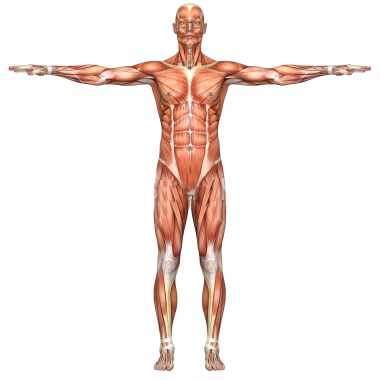THE HUMAN BODY

A normal human body has about 5 billion capillaries whose total length, if stretched out, is about 950 kilometers.
Special secretion in the nasal mucous retains and sweeps out about 80-90of the micro-organisms that gain entry to the respiratory system directly or through dust.
One B cell can pump out more than 10 million antibody molecules an hour.
Our heart pumps about 43,000 liters of blood per day.
The simplest cells have roughly 2,000 different types of proteins.
If the information in DNA were put in the form of a book, these books put on top of each other would reach 70 meters high.
The DNA of a single cell contains the design of 206 bones, 600 muscles, a network of 10,000 auditory muscles, a network of 2 million optic nerves, 100 billion nerve cells, and 100 trillion cells in the body.
A brain cell is in constant interaction with others numbering up to 10,000. This communication network is far more complex than all the switchboards in the world.
The nucleus of each of the trillions of cells making up the human body includes a data bank big enough to fill a 900-volume encyclopedia.
The human eye works by some 40 different parts functioning together.
The retinal membrane at the back of the eye is made up of 11 different layers.
Each red cell can carry 300 million hemoglobin molecules. When we inhale, oxygen floods into about 300 million tiny chambers in our lungs.
If water were only slightly more viscous, it would be impossible for blood to be transported through the body’s capillary system.
Immune system elements that the baby needs, such as antibodies or defense cells, are given to the baby ready-made in the mother’s milk.
There is 5 liters of blood in the body of a human weighing 60 kilograms.
Due to their incredible flexibility, red cells, with a diameter of about 7.5 micrometers, can squeeze through capillaries which are normally four to five micrometers in diameter.
A single brain can process work equivalent to that of 4.5 million transistors on a modern microprocessor.
The human kidneys filter about 140 liters of blood every day through one million small filtering units.
The nasal bones are especially structured so that the air inhaled can go to the lungs only after circulating several times in the nose and thus warming up.
lifespan of a red blood cell is about 120 days.
Even for a faint smile, 17 muscles have to work together at the same time.
A liver cell is specialized enough to perform more than 500 operations at a time.
The heart connects the 100 trillions cells in the human body one by one.
The heart beats approximately 100,000 times a day.
Verily! In the creation of the heavens and the earth, and in the alternation of night and day, and the ships which sail through the sea with that which is of use to mankind, and the water which Allah sends down from the sky and makes the earth alive therewith after its death, and the moving {living} creatures of all kinds that He has scattered therein, and in the veering of winds and clouds which are held between the sky and the earth, are indeed aayaat {proofs, evidences, lessons, signs, revelation, etc.} for people of understanding.] Surah Al Baqarah{2:164}







